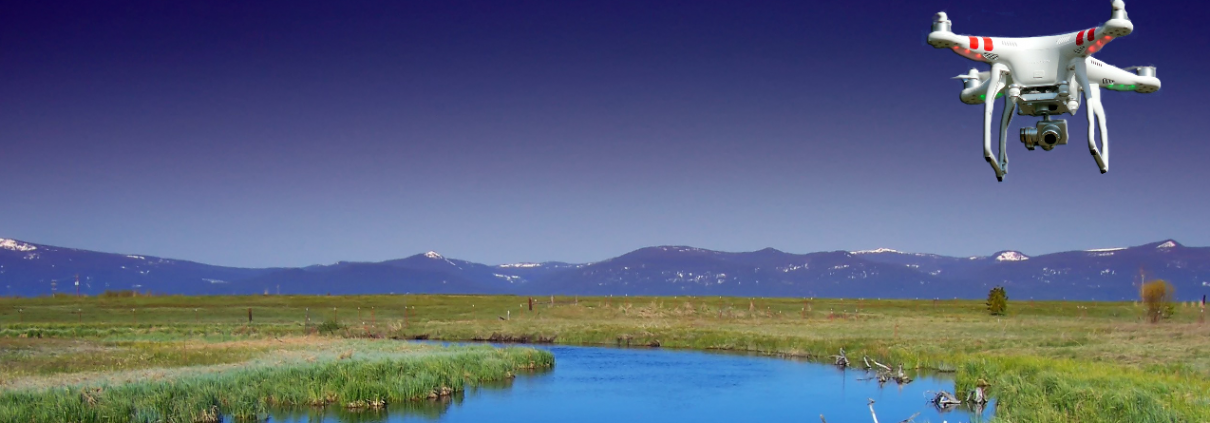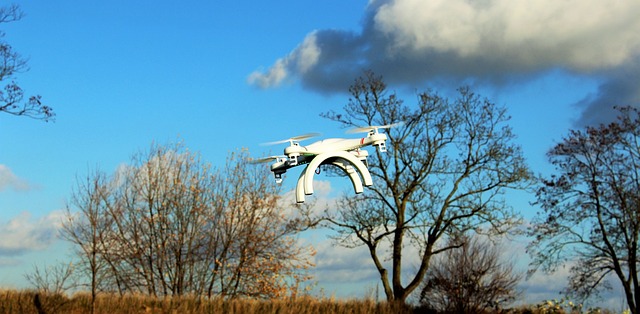Drones for Commercial Use: Taking Real Estate Businesses to New Heights
As I was browsing the internet today, I came upon a humorous article entitled Santa Delivered the Drone. But not the safety and skill to fly it. The article contained a number of “drone laments”, speaking of the excitement of getting a new drone for Christmas followed by the agony of crashing it on the first day or even the first flight. One Tweet read: “A holiday story: Give nephew drone. Nephew flies drone for like five seconds. Drone falls, breaks. Christmas ruined. Drones are stupid. The end.” This one gave me a good laugh.
It’s true that drones have become a very hot item in recent years. And as the technology has become more widespread and less expensive, drone sales have gone through the roof. The majority of the drones sold cost less than $200 and are best classified as toys. And most people who fly them lack a good understanding of flight principles, wind, and spatial awareness. Thus, the yuletide drone woes come as no surprise.
“The use of drones across all sectors has exploded in the past three years. The FAA estimates that over 600,000 drones will be flying commercially in the US in 2017.”
In real estate and many other businesses, drones for commercial use are definitely not toys. They are valuable and, I might add, critical tools for marketing and selling property. I have personally been using drones for over two years – thanks to my FAA Section 333 exemption. I can personally attest to their value in my business, BUT here’s the latest: my exemption doesn’t exist anymore. In fact, ZERO Section 333 exemptions exist. That’s because in August of 2016, the FAA enacted a new rule enabling people to become licensed specifically as drone operators. Previously, the only way to legally fly a drone for commercial purposes was to hold a pilots license and go through a lengthy approval process to get an exemption. Now, after taking online education and passing a written exam, individuals become licensed as drone operators and can fly completely legally, subject to certain regulations.

Due to this new rule, I have been encouraging every land broker I know to become licensed and start flying. You can buy a drone for less than $1,000 that has all the capabilities needed, and you don’t have to be a Navy fighter pilot to safely and efficiently fly your drone for maximum effectiveness. A little practice goes a long way and the more you fly, the more comfortable you will become. I often tell people that I could teach a ten year old to fly my drone in under thirty minutes – and I mean it. With the right equipment, the drone basically flies itself. This small investment of money and time has the potential to have huge impacts on your business.
An overhead view provided by a drone shows how a property fits together, how it is accessed, and the surrounding land and uses. On a large property, you can showcase more about a property in a sixty-second video than an entire morning of driving. Additionally, in the same way that digital photography and online mapping are considered standard today, drone video and photography are becoming just as commonplace. As land professionals, it is important to keep in step with emerging trends to bring the best service and value to our clients.
At the 2017 National Land Conference, I will be leading a breakout session on the use of drones in land real estate. We will briefly discuss how to become licensed as a drone operator but will focus primarily on how to best use this tool to increase value for your clients and increase business for yourself. If you have no experience or interest in drones, I invite you to attend and see if I can change your mind. If you have been flying drones for years as I have, I invite you to come and share your stories, as well as what works for you and what doesn’t. The format will be very interactive and I think everyone will come away having learned something new – including myself!
I hope to see you at the 2017 National Land Conference in Charlotte, NC, from March 31-April 2. In the meantime, if you have any questions about drones that I can answer, please give me a call or drop me an email.
 About the author: Caleb McDow is a land specialist for Crosby and Associates in Winter Haven, FL, with a Master of Science in Real Estate (MSRE) and is a FAA Certified Drone Pilot. McDow joined the institute in 2014 as a Military Transition Program (MTP) member. He serves on the Institute’s Future Leaders Committee and regularly blogs on real estate issues. Caleb McDow can be reached at 352-665-6648 or caleb@crosbydirt.com
About the author: Caleb McDow is a land specialist for Crosby and Associates in Winter Haven, FL, with a Master of Science in Real Estate (MSRE) and is a FAA Certified Drone Pilot. McDow joined the institute in 2014 as a Military Transition Program (MTP) member. He serves on the Institute’s Future Leaders Committee and regularly blogs on real estate issues. Caleb McDow can be reached at 352-665-6648 or caleb@crosbydirt.com










